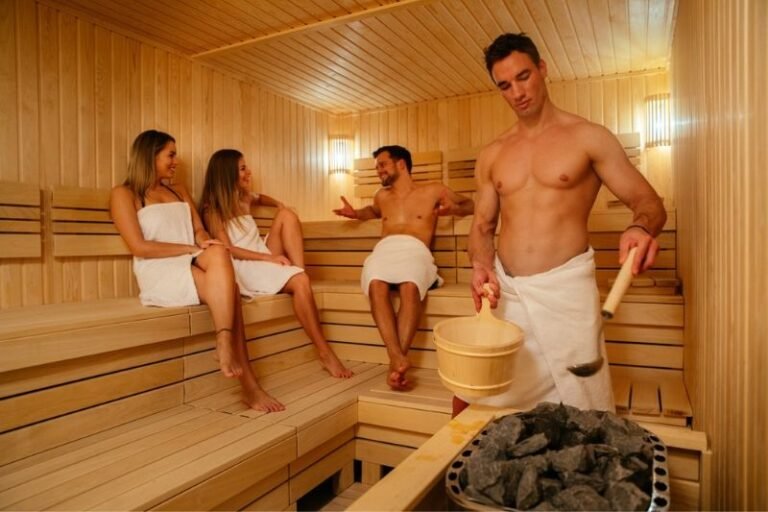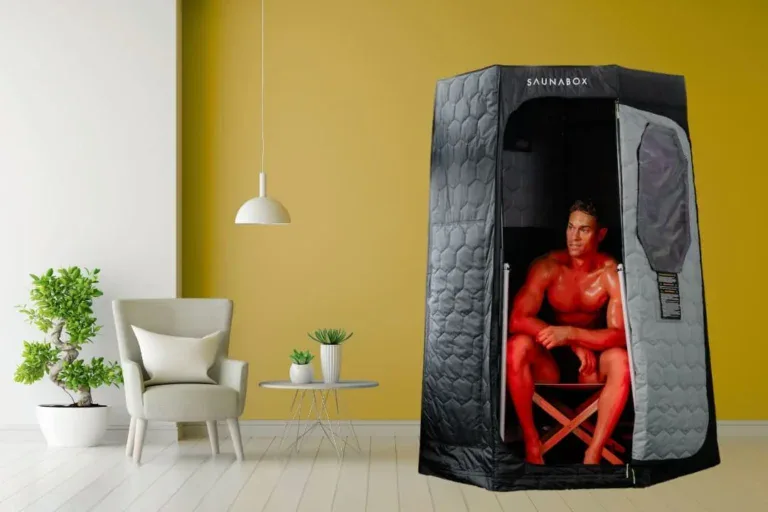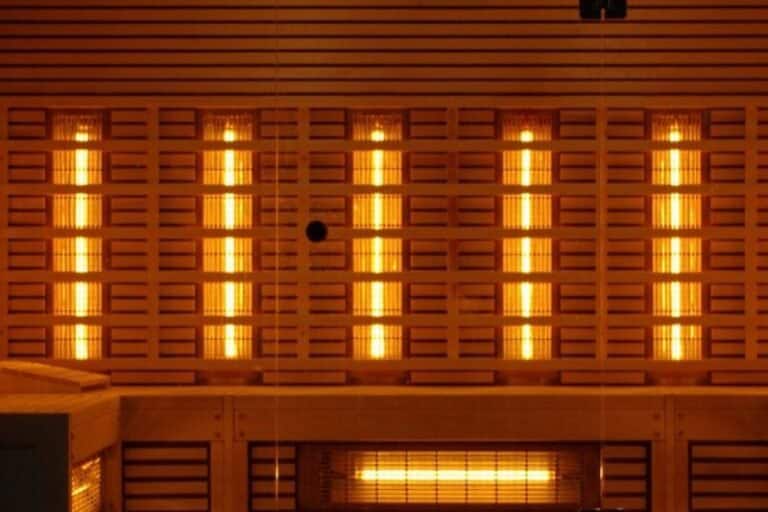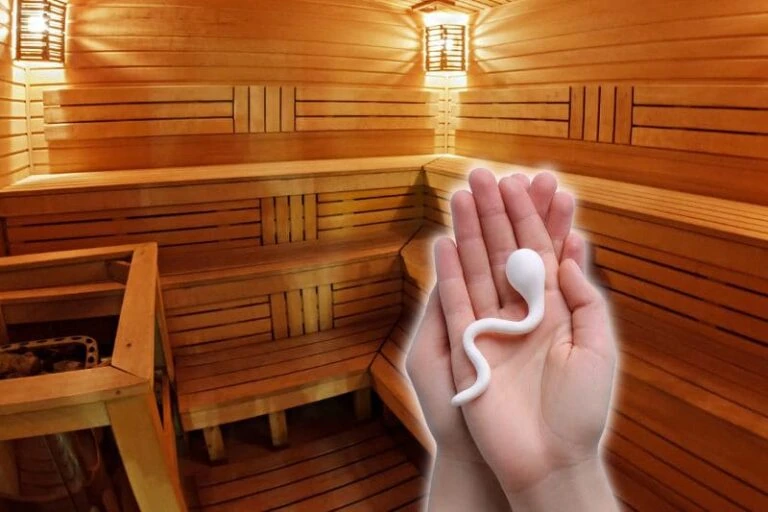Steam Shower vs Sauna? Here’s What Most People Get Wrong
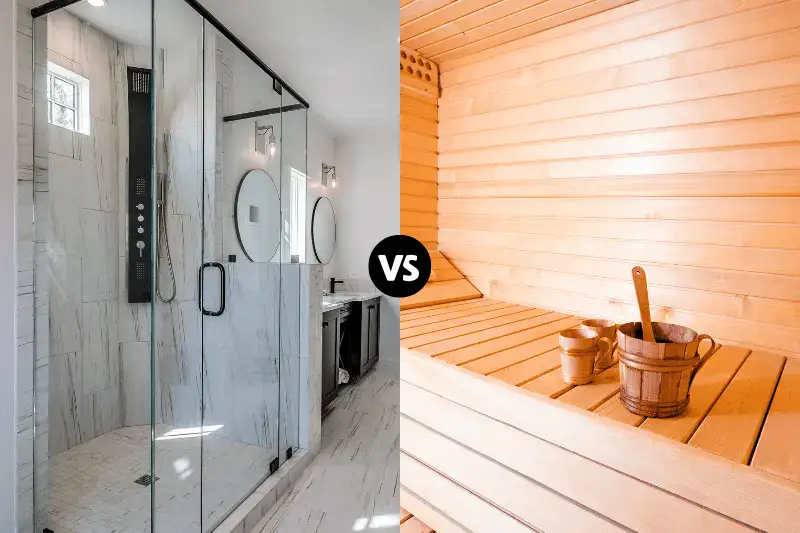
When I first transitioned from my chartered accounting background to become a sauna expert over a decade ago, I’ll admit I used “steam shower” and “sauna” interchangeably. Big mistake. After personally testing dozens of models and installing both systems in my own home, I’ve learned they’re as different as a hot tub and a swimming pool – both involve heat, but the experience couldn’t be more distinct.
Quick Verdict
Steam showers use moist heat (100-120°F, 100% humidity) and fit in existing bathrooms. Better for daily use, skin health, and respiratory issues.
Saunas use dry heat (160-200°F, low humidity) and need dedicated space. Better for intense detox, cardiovascular health, and muscle recovery.
👉 Bottom line: Choose a steam shower if you want gentle daily wellness. Choose a sauna if you want intense health benefits and have the space.
If you’re considering adding one of these wellness features to your home, you’re making a smart investment in both your health and property value. But choosing between a steam shower and a sauna isn’t just about preference – it’s about understanding how each works, what benefits they offer, and which fits your lifestyle, space, and budget.
Let me walk you through everything I’ve learned from hands-on experience with both systems, plus what the research tells us about their respective benefits.
Table of Contents
The Fundamental Differences: Wet Heat vs Dry Heat
Steam Showers: The Moist Heat Experience
A steam shower creates what I call “enveloping warmth.” The system uses a steam generator (located outside the shower) to boil water and pump steam into an enclosed shower space. The result? Temperatures between 100-120°F with nearly 100% humidity.
When you step into a properly functioning steam shower, you’re immediately wrapped in a cloud of warm, moist air. Your skin feels the moisture instantly, and breathing becomes deeper and more relaxed. The walls typically show condensation within minutes – that’s exactly what should happen.
Saunas: The Dry Heat Tradition
Saunas work on the opposite principle. Whether traditional (heated by rocks and a stove) or infrared (using light waves), they create dry heat with minimal humidity – usually just 10-20%. Traditional saunas run much hotter, typically 160-200°F, while infrared saunas operate around 120-140°F.
My first traditional sauna experience was intense: the initial shock of hot, dry air hitting my lungs, followed by an oddly comfortable warming sensation. Your body heats from the outside in, and you start sweating profusely within minutes.
Health Benefits: What Science and Experience Tell Us
Steam Shower Benefits I’ve Documented
Respiratory Relief
This is where steam showers truly shine. The warm, moist air opens airways and helps clear congestion. I’ve tracked this benefit during allergy seasons and when fighting colds – the relief is immediate and measurable.
Skin Health
The high humidity keeps your skin hydrated while you sweat, opening pores without the drying effects of dry heat. Multiple users have reported improved skin condition after switching from dry saunas to steam showers.
Gentle Detox
While you do sweat in a steam shower, it’s a gentler process than a sauna. The lower temperature means you can stay longer (I typically recommend 15-20 minutes) without feeling overwhelmed.
Aromatherapy Options
Most steam systems allow you to add essential oils. Eucalyptus proves particularly effective for respiratory benefits.
Cardiovascular Function
Research shows moist heat therapy effectively improves cardiovascular function by reducing blood pressure1.
Sauna Benefits from Regular Use
Intense Detoxification
The high heat and profuse sweating in a sauna create what feels like a more thorough detox. Studies show saunas help eliminate heavy metals and other toxins through sweat2 more effectively than steam rooms.
Cardiovascular Benefits
The research here is impressive. A major Finnish study found that men using saunas 4-7 times weekly had 50% lower risk of fatal heart disease3. Regular users often report improved resting heart rate within 2-3 months.
Muscle Recovery
According to research, the dry heat of a sauna provides superior muscle relaxation after intense workouts4. The heat penetrates deeply, making it more effective than steam for post-exercise recovery.
Mental Health
Both heat therapies boost mood, but saunas seem to provide more intense psychological benefits. The extreme heat triggers endorphin release that creates what users describe as a “natural high.”5
Longevity Benefits
Recent studies suggest regular sauna use may reduce all-cause mortality and support healthy aging6.
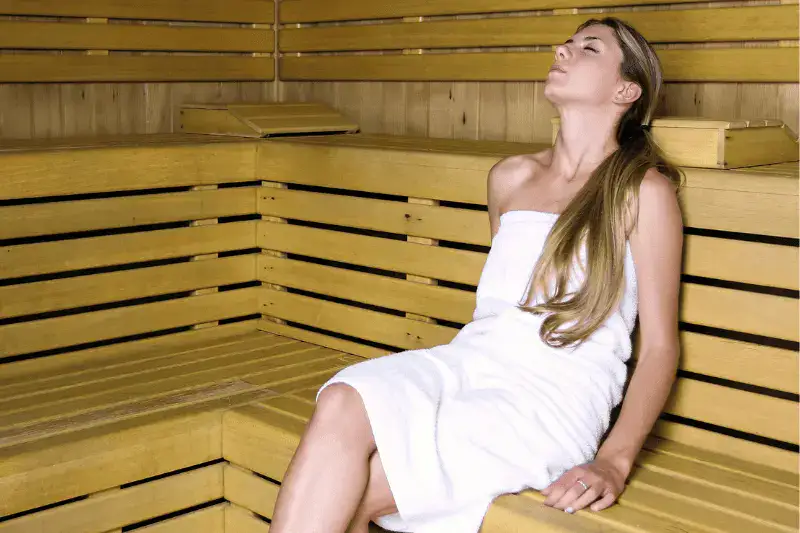
Safety Considerations: Who Should Be Cautious
Before choosing either option, it’s crucial to understand the safety considerations – something often overlooked in the excitement of installation planning.
General Precautions for Both
- Pregnant women should avoid both steam showers and saunas
- People with cardiovascular disease should consult their doctor first
- Those with uncontrolled high or low blood pressure need medical clearance
- Individuals with certain skin conditions may find symptoms worsen
- People taking medications that affect circulation should check with healthcare providers
Steam Shower Specific Concerns
- High humidity can worsen arthritis symptoms in some individuals
- Asthmatics may find the moist air helpful or problematic (varies by person)
- Those prone to claustrophobia might struggle with the enclosed, humid environment
- Risk of bacterial growth if maintenance is neglected
Sauna Specific Warnings
- Higher temperatures create greater cardiovascular stress
- Dehydration risk is significantly higher than with steam showers
- People with epilepsy should avoid sauna use due to heat sensitivity
- Those with multiple sclerosis may experience symptom worsening
Always start with shorter sessions (5-10 minutes) regardless of which option you choose, and never use either when feeling unwell or after consuming alcohol.
Installation and Space Considerations
Steam Shower Installation Reality
One major advantage: you can convert an existing shower into a steam shower. I’ve overseen multiple installations, and here’s what’s typically required:
- Installing a steam generator (usually goes in the basement, attic, or utility room)
- Upgrading to non-porous materials (tile, glass, stone)
- Adding proper sealing and a sloped ceiling to prevent dripping
- Electrical work for the generator and digital controls
- Adequate ventilation to manage moisture
Total project time: 1-3 weeks, depending on complexity
Cost range: $8,000-$25,000 depending on size and finishes
Professional vs DIY:
Steam shower installation requires plumbing and electrical expertise. This isn’t a DIY project unless you’re highly skilled.
Sauna Installation Challenges
Saunas need dedicated space, and location options include:
- Basement installation (most common)
- Garage conversion
- Outdoor installation (requires weatherproofing)
- Dedicated room addition
- Master bathroom (if space permits)
Even a compact 2-person sauna needs a minimum of 4×6 feet. Traditional saunas require additional ventilation and 220V electrical for the heater. Infrared units are simpler – many are plug-and-play once space is prepared.
Professional vs DIY:
Many infrared saunas can be DIY installed. Traditional saunas typically require professional electrical work.
Energy Efficiency and Operating Costs
After tracking costs across multiple installations, here’s the real data:
Steam Shower Operating Costs
- Electricity: $25-45/month (based on 4-5 uses weekly)
- Water usage: Surprisingly low – about 2 gallons per 20-minute session
- Maintenance: $200-500/yearly (descaling, cleaning supplies, occasional repairs)
Sauna Operating Costs
- Traditional sauna electricity: $35-60/month
- Infrared sauna electricity: $20-40/month
- Maintenance: $150-300/yearly (wood treatment, heater maintenance)
Energy Efficiency Winner
Infrared saunas are the most efficient, followed by steam showers, and then traditional saunas.
Climate Considerations
Your local climate affects which option works better:
Hot, Humid Climates
- Saunas are often preferred (dry heat provides contrast to outdoor humidity)
- Steam showers may feel oppressive when outdoor humidity is already high
- Air conditioning costs increase more with steam shower use
Cold, Dry Climates
- Steam showers provide welcome humidity relief
- Both options are highly appreciated as warm retreats
- Heating costs may offset some operating expenses
Moderate Climates
- Either option works well
- Choice comes down to personal preference and specific health goals
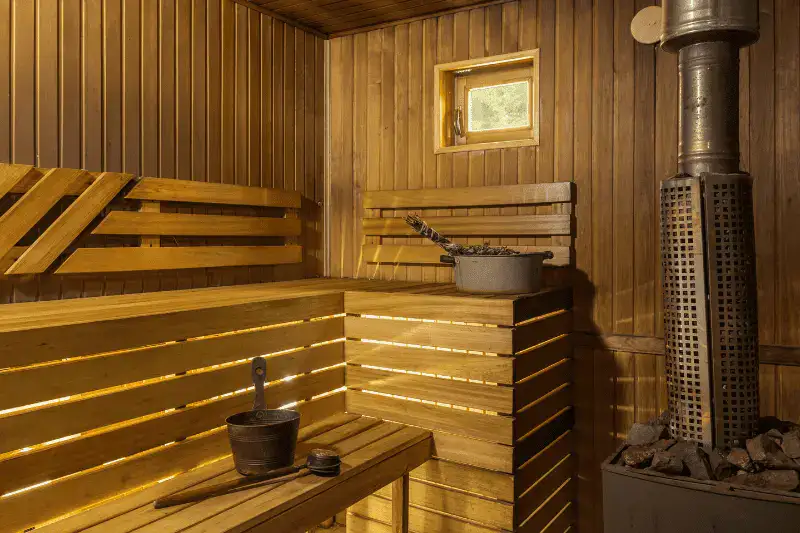
Family Usage Patterns
Different family members often prefer different options:
Children (with supervision):
- Steam showers are generally safer due to lower temperatures
- Most kids find steam more comfortable than intense sauna heat
- Always supervise and limit sessions to 5-10 minutes max
Elderly Users:
- Steam showers are typically better tolerated
- Lower cardiovascular stress
- Easier entry/exit in shower-based systems
Athletes/Fitness Enthusiasts:
- Often prefer saunas for muscle recovery
- Higher heat provides more intense post-workout benefits
- Steam showers are good for respiratory health if doing cardio sports
Real-World Usage Patterns
After years of tracking usage with both systems, here’s what actually happens:
Steam Shower Usage
- Average: 4-6 times weekly once established routine
- Perfect for daily use and evening relaxation
- Great for seasonal respiratory issues
- Easy to incorporate into a regular shower routine
- Typical sessions: 15-25 minutes
Sauna Usage
- Average: 2-4 times weekly for most users
- Better for planned wellness sessions
- Ideal post-workout recovery tool
- Requires more preparation and recovery time
- Typical sessions: 15-30 minutes with cooling breaks
Reality Check:
Initial enthusiasm often leads to daily use, which typically settles into 3-5 times weekly after the first few months.
Maintenance and Long-Term Ownership
Steam Shower Maintenance Tasks
Monthly:
- Clean and inspect the steam generator
- Wipe down all surfaces to prevent mold
- Check seals and grout integrity
- Test temperature and steam output
Quarterly:
- Descale the generator (crucial for longevity)
- Deep clean all surfaces with mold-preventing cleaner
- Inspect electrical connections
Annually:
- Professional maintenance check
- Replace any worn seals
- Update software if applicable
The high humidity means constant vigilance against mold and mildew. Skip regular cleaning at your peril – I’ve seen expensive damage from neglected maintenance.
Sauna Maintenance Tasks
After Each Use:
- Wipe down benches
- Leave the door open for air circulation
- Remove any wet towels or accessories
Monthly:
- Clean wood surfaces with an appropriate cleaner
- Check heater operation (traditional) or infrared panels
- Inspect the ventilation system
Annually:
- Wood treatment (oil or sealer)
- Replace sauna rocks (traditional units)
- Professional electrical inspection
Saunas are generally low maintenance, though traditional units require rock replacement every 2-3 years, depending on usage.
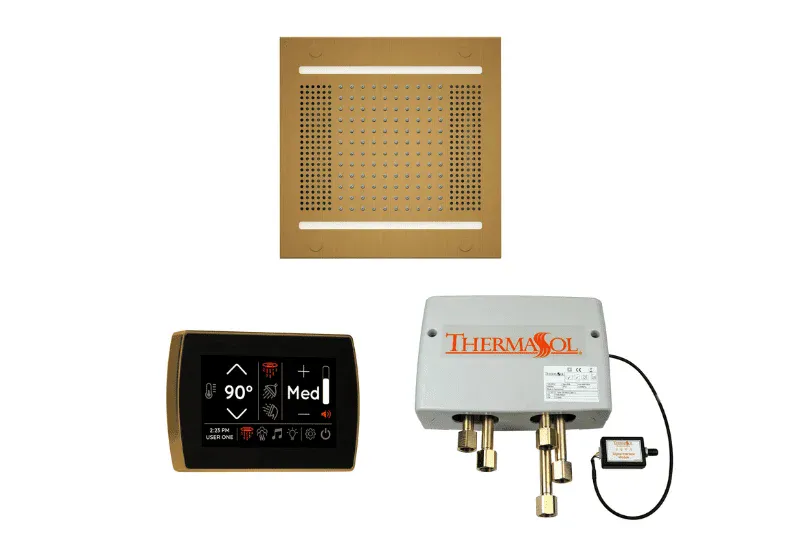
Common Mistakes to Avoid
From overseeing dozens of installations and troubleshooting problems:
Steam Shower Mistakes
- Inadequate generator sizing (leads to weak steam)
- Poor sealing during installation (causes mold issues)
- Insufficient ventilation planning
- Choosing wrong materials (porous stones, improper tile)
- Neglecting regular descaling (kills generators prematurely)
- Installing the generator too far from the shower (reduces efficiency)
Sauna Mistakes
- Insufficient electrical capacity for the heater
- Poor insulation in the dedicated space
- Inadequate ventilation design
- Wrong wood choice for climate/usage
- Undersized space for intended users
- Ignoring local building codes
Cost-Benefit Analysis Over Time
5-Year Total Cost of Ownership
Steam Shower
- Installation: $12,000 (average)
- Operating costs: $1,800
- Maintenance: $1,500
- Total: $15,300
Traditional Sauna
- Installation: $15,000 (average)
- Operating costs: $2,400
- Maintenance: $1,200
- Total: $18,600
Infrared Sauna
- Installation: $8,000 (average)
- Operating costs: $1,500
- Maintenance: $900
- Total: $10,400
Here’s my advice
- Pick infrared if you want the best deal and good wellness benefits.
- Go with a steam shower if you’ll use it daily and care about home value.
- Only choose a traditional sauna if you love the authentic experience and don’t mind paying more.
The most important thing? The best value is whichever one you’ll actually use. A $15,000 steam shower you use every day beats a $10,000 sauna sitting empty.
Impact on Home Value
Based on real estate data from recent sales:
Steam Showers
- Add 3-5% to bathroom value
- Appeal to luxury home buyers
- Better ROI in master bathroom installations
- More universally appealing than saunas
Saunas
- Add 2-4% to home value (if well-executed)
- Appeal varies significantly by region
- Outdoor saunas are less impactful than indoor ones
- May limit the buyer pool in some markets
Winner for Resale: Steam showers typically provide better ROI and broader buyer appeal.
Combination Options: The Best of Both Worlds
Here’s something most people don’t consider: you can have both. After installing our infrared sauna three years after our steam shower, I discovered they complement each other perfectly.
Complementary Usage Patterns
- Steam shower for daily relaxation and respiratory health
- Sauna for intense post-workout recovery and cardiovascular benefits
- Steam when feeling congested or during allergy season
- Sauna for deeper detox and mental clarity sessions
Smart Combination Strategies
- Start with a steam shower (easier installation, more daily use)
- Add a compact infrared sauna later if space/budget allows
- Consider an outdoor sauna + indoor steam shower combination
Budget-Friendly Combination
- Install a steam shower in the existing master bath
- Add a portable sauna in the basement or spare room
- Total investment is often less than a single high-end traditional sauna
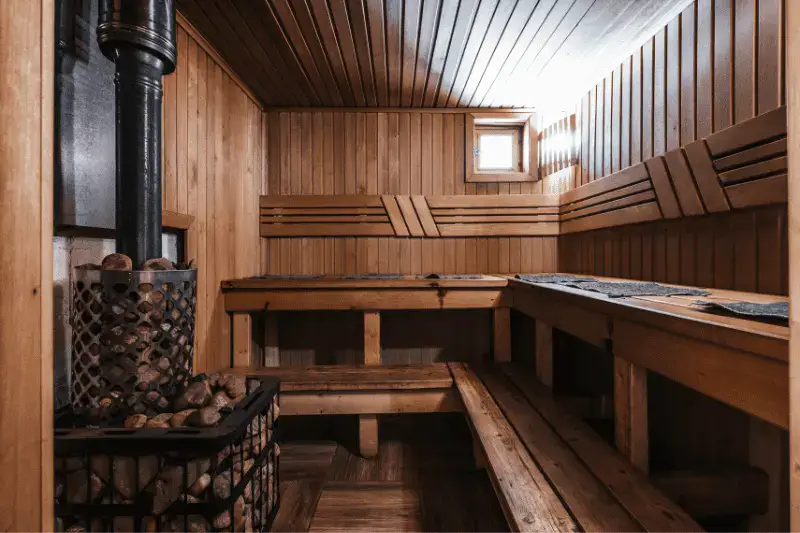
Making Your Decision: Key Questions to Ask
Drawing from years of guiding homeowners through this choice:
Health Priorities
- Respiratory issues or dry skin? → Steam shower
- Cardiovascular health focus? → Sauna
- Post-workout recovery? → Sauna
- Daily stress relief? → Steam shower
Lifestyle Factors
- Limited space? → Steam shower
- Want daily use? → Steam shower
- Prefer weekend wellness rituals? → Sauna
- Have young children? → Steam shower (gentler)
- Live in a humid climate? → Possibly sauna
Practical Considerations
- Existing shower to convert? → Steam shower advantage
- Dedicated space available? → Either works
- Lower maintenance preference? → Sauna
- Budget under $15,000? → Probably infrared sauna or steam shower
Future Planning
- Planning to age in place? → Steam shower (safer long-term)
- Selling within 5 years? → Steam shower (better ROI)
- Building a dream forever home? → Consider both
My Personal Recommendation
If forced to choose just one, I recommend a steam shower for most homeowners. Here’s my reasoning:
Steam Shower Advantages
- More versatile daily use
- Easier installation in existing spaces
- Gentler experience suitable for all family members
- Lower barrier to regular use
- Better integration with daily routines
- Superior ROI for resale
But if you’re serious about cardiovascular health, have dedicated space, enjoy intense heat experiences, and prefer the traditional sauna culture, a sauna might be your better choice.
Special Considerations
- Athletes and fitness enthusiasts: Lean toward sauna
- Families with children: A steam shower is typically better
- Limited space: Steam shower wins
- Unlimited budget: Get both
- Health concerns: A steam shower usually a safer option
Bottom Line
Both steam showers and saunas offer legitimate health benefits backed by research and real-world experience. Your choice between a steam shower vs sauna comes down to space, budget, health goals, personal heat preference, and lifestyle integration.
The good news? You really can’t go wrong with either choice, and both will enhance your home wellness routine significantly. Just make sure you understand the differences, plan the installation properly, commit to regular maintenance, and most importantly – actually use it regularly to get the full benefits.
After a decade in this industry and personally testing dozens of systems, I can confidently say that the best wellness system is the one you’ll actually use consistently.
Whatever you choose, you’re taking a significant step toward better health, reduced stress, and enhanced quality of life – and that’s always a winning decision.
Frequently Asked Questions
Which burns more calories?
Saunas typically burn 150-250 calories per 20-minute session vs. 100-150 for steam showers, due to higher temperatures and increased cardiovascular demand.
Can you use them daily?
Yes, both are safe for daily use when properly used. Steam showers are gentler for daily routines, while I recommend alternating sauna days with rest days for optimal recovery.
Which is better for weight loss?
Both cause temporary water weight loss through sweating. For actual fat loss, saunas may have a slight edge due to higher calorie burn and cardiovascular benefits.
Are there age restrictions?
Steam showers are gentler and generally safer for children (with supervision) and elderly users. These groups should use high-heat saunas cautiously, and medical clearance is required for those with health conditions.
Which adds more home value?
Steam showers typically provide better ROI (3-5% bathroom value increase) and appeal to more buyers than saunas (2-4% home value increase).
How long until I see health benefits?
Most users report immediate relaxation and stress relief. Cardiovascular benefits typically become noticeable within 4-6 weeks of regular use (3+ times weekly).
What about seasonal usage?
Both see increased use during colder months. Steam showers are used more during allergy seasons, while saunas are popular post-workout year-round.
Resources
- Pandiaraja, M., Vanitha, A., Kuppusamy, M., Vijayakumar, V., Poonguzhali, S., Radhika, L., & Manavalan, N. (2020). Effect of the steam bath on resting cardiovascular parameters in healthy volunteers. Advances in Integrative Medicine, 8, Article 100218. https://doi.org/10.1016/j.aimed.2020.06.001 ↩︎
- Sears, M. E., Kerr, K. J., & Bray, R. I. (2012). Arsenic, cadmium, lead, and mercury in sweat: a systematic review. Journal of environmental and public health, 2012, 184745. https://doi.org/10.1155/2012/184745 ↩︎
- Laukkanen, T., Khan, H., Zaccardi, F., & Laukkanen, J. A. (2015). Association between sauna bathing and fatal cardiovascular and all-cause mortality events. JAMA Internal Medicine, 175(4), 542–548. https://doi.org/10.1001/jamainternmed.2014.8187 ↩︎
- Ahokas, E. K., Ihalainen, J. K., Hanstock, H. G., Savolainen, E., & Kyröläinen, H. (2023). A post-exercise infrared sauna session improves recovery of neuromuscular performance and muscle soreness after resistance exercise training. Biology of sport, 40(3), 681–689. https://doi.org/10.5114/biolsport.2023.119289 ↩︎
- Hussain, J., & Cohen, M. (2018). Clinical Effects of Regular Dry Sauna Bathing: A Systematic Review. Evidence-based complementary and alternative medicine : eCAM, 2018, 1857413. https://doi.org/10.1155/2018/1857413 ↩︎
- Patrick, R. P., & Johnson, T. L. (2021). Sauna use as a lifestyle practice to extend healthspan. Experimental Gerontology, 154, 111509. https://doi.org/10.1016/j.exger.2021.111509 ↩︎

“Become a Sauna Expert Overnight!”
Grab Your “FREE” Sauna E-book NOW!
Get your hands on the ultimate sauna manual. From history to DIY setups, our free guide has it all.

As a Chartered Accountant turned sauna enthusiast, I bring a unique blend of analytical skills and hands-on experience to the world of heat therapy. With over a decade dedicated to researching and testing sauna products and practices, I’ve developed a deep understanding of this field. A the founder of HomeInDepth.com, I provide reliable, easy-to-understand information on all aspects of saunas. My goal is to guide you through every step of your sauna journey, offering meticulously researched, unbiased advice to help you make informed decisions and create your perfect sauna experience. I’m always happy to hear from sauna lovers like you—feel free to leave questions or share your own tips in the comments below so we can learn together. Contact me on:

